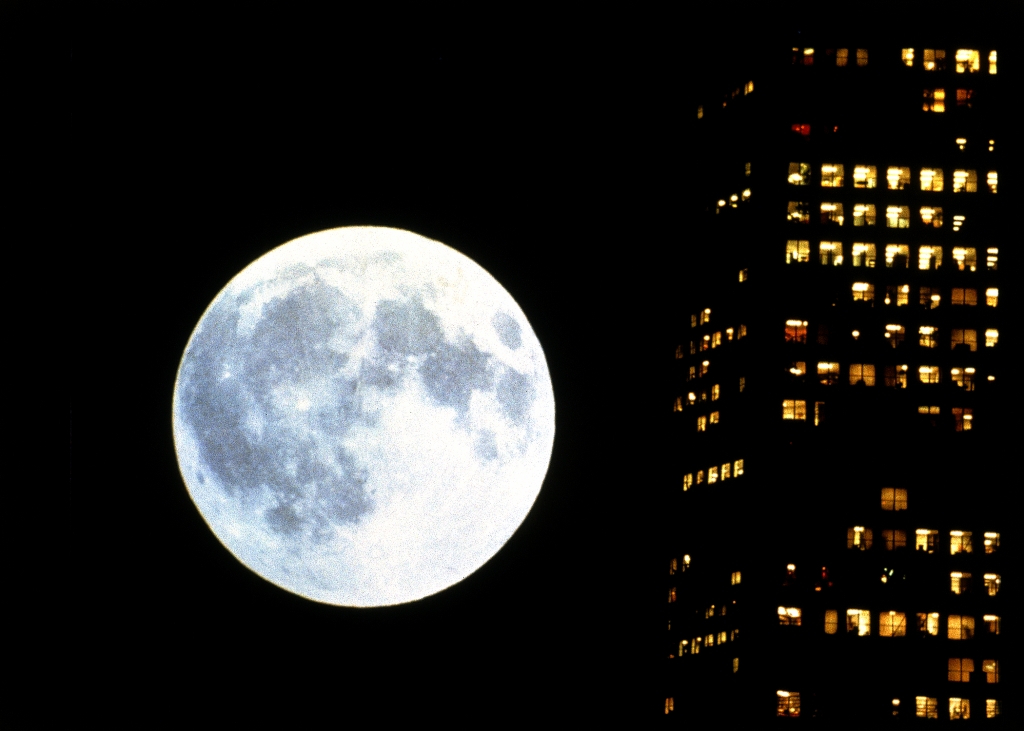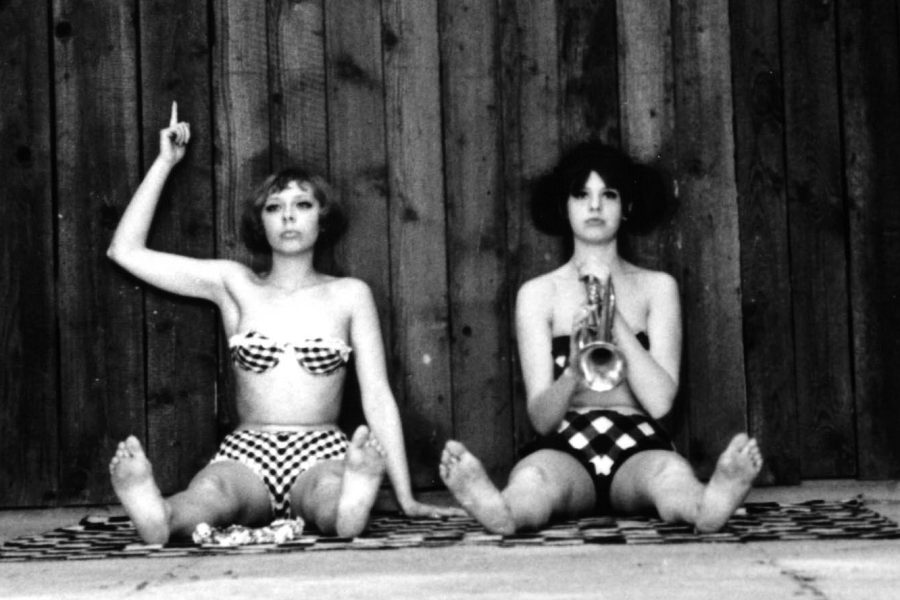Koyaanisqatsi means ‘life out of balance’, in the Hopi language. Godfrey Reggio and Ron Fricke’s experimental film, is composed almost entirely of slow motion and time-lapse footage of epic natural landscapes and human movement through built environments. The imagery is accompanied by a specially composed soundtrack by Philip Glass, without dialogue or narration.
Cornwall-based composer Graham Fitkin, who works with international orchestras, ensembles and soloists, using acoustic and electronic instruments and found sounds, selected this film.
GRAHAM FITKIN: INTRODUCTION
My life has very occasionally been punctuated by some special ‘moments’. Moments which at the time they are happening I’m aware are immense for me. Moments which have remained as some of the structural pillars on which I build my general and creative perspectives. Listening to Stravinsky’s Rite of Spring for the first time when I was eleven, a moment of awe and wonder, made a huge impact. As was experiencing the physically visceral dance world of Wim Vandekeybus when I was 28 years old, which meant that I exited the theatre by cartwheeling and Arab springing my way down Euston Road I was so excited. These truly special moments are quite rare. But in the 1980s I experienced two of them.
The first was reading E. F. Schumacher’s book Small is Beautiful. The book advocates the development of small, appropriate technologies and policies as a more apt principle on which to build a future rather than the mainstream ‘bigger is better’ view. The second was seeing Koyaanisqatsi for the first time. Both deal with similar issues. Both things have persisted in my head. And both I still find sadly very relevant.
———————
Koyaanisqatsi was released in 1982. And in some ways it has dated. Time lapse photography. Slow motion footage. Juxtaposition of conflicting images. Since its release over the past 39 years or so we have become habituated to these filmic techniques. Sports footage, nature photography, advertising hair products. But when this film was created they were astonishing new tools, not the comfortable and ubiquitously predictable approaches that so many current films or environmental documentaries might take. They were strikingly unusual, mesmeric, and used to great emotional and thought provoking effect in order to highlight and draw out essential fundamentals of the film. They had not yet been consigned to the role of cliché.
Koyaanisqatsi is many things. A collage, an environmental documentary, a series of portraits. An immersive experience. It has a hint of opera to it, it finds beauty in the natural and mechanised worlds, it seems to have a vision and a remit to stimulate the viewer. Yet I feel it does not preach, it does not blithely take a position and seek to justify it. It seems to find nuance in its encounters and its abstraction leads to a more detached position.
It is non-narrative. It doesn’t find solutions. There is no dialogue, no text, no easy storyline. Instead there is music. Repetitive. Non-teleological. With tonal centres and juxtaposition. Almost deconstructing music from the past. But of course, over the past 39 years or so we have become habituated to these musical techniques. I might even argue so much so that they too have been consigned to the role of cliché by impersonation, misuse and sheer laziness. But at the time and in this context I found them astonishing and I still do.
The film was created over a period of seven years, and to me appears to be a true collaboration. Cinematography by Ron Fricke, music by Philip Glass, direction by Godfrey Reggio. It is one if those rare works in which the sum of the parts whole comes together as a whole. The word ‘Koyaanisqatsi’ from Hopi Indian, means ‘life out of balance’. It is the first of a trilogy of ‘qatsi’ films and focuses, as Reggio says, on ‘the collision of two different worlds – urban life and technology versus the environment’.
One of the things I like about the film is that it requires the viewer/listener to engage fully. Yes there are many visual and audio delights within the film to enjoy – light, shape, patterns, leitmotifs, colour cross-references – but it necessitates work from its audience. It provides no easy answers in a world which seems to constantly funnel us towards a paradigm of black and white, good and bad. This film accepts the world is complex and multi-faceted, existing in shaded levels of interacting greys. With its ecological focus (and its title) it clearly questions the premise of expanding neo-liberalism as a sensible system for a finite planet, but it does not try to convince. (In fact Reggio preferred not to have a title for the film at all.) The images are designed, and succeed I would say, in being arresting and beautiful, but they’re specifically not categorised by meaning or emotional attachment. They are beautiful and arresting whether from the natural world or through aggressive human intervention. The film guides us without hectoring. I found the film stimulating and provoking and, when I first experienced it, it raised questions within me. Questions which many of us ask. How should humankind interact with the planet? How should humankind interact with a planet right now, at this point, with its multiplicity of cultures, histories, prejudices and belief systems in place? What are we striving for? Is there a balanced ‘norm’ that we should be trying to attain? These questions, and the last one in particular, occupy my mind frequently, hovering sometimes within and sometimes on the peripheries of my own work as a composer.
———————
We perceive everything in relation to ourselves: our size, our biological shape, our weight, our experiences and conditioning. We refer to something as fast or slow, big or small, heavy or light because in our world there is a standard ‘norm‘ – a blue whale is largely viewed as big, an ant small, a tortoise slow, Usain Bolt fast. These viewpoints usefully help us categorise our world, and position ourselves within it. They’re not actually ‘immutable’, ‘correct’, ‘written in legislature’. The ‘norm’ is often unwritten, it is assumed and things get very interesting when it is challenged. If we were the size of bacteria we would view speed and size in a very different way I suspect. If our standard life expectancy was 500 years instead of 72 years we might view time in a different way. Richard Dawkins says that we occupy ‘middle world’ and therefore can only appreciate and perceive things from that viewpoint. I would also add that within middle world these viewpoints can change over time through technological, political and social change, so as the world gets ‘smaller’, or travel options alter, or technology allows new interactions between us previously thought of as sci-fi, we begin to perceive things slightly differently. Our grasp of previously accepted norms shifts. Of course sometimes things change more abruptly, we perceive the changes clearly – perhaps a pandemic or a war alters things not just over its duration but leaves a lasting legacy afterwards. This film though speaks not just of noticeable change but incremental change, change which occurs over say a generation or so and we don’t even feel it. We don’t know what has shifted because we don’t recognise a moment of change. In science this is called a Shifting Baseline.
It is a term originally applied to unperceived ecological degradation, in which a sort of generational amnesia takes place, through lack of knowledge, experience or memory. What we might regard as ‘normal’ now, previous generations might regard as degraded. And what we regard as degraded, future generations might regard as normal. It has relevance to environmental policy, because, whilst theremight be a laudable general move to ‘restore’ natural habitats, or ‘save’ a particular species, it depends which point on that timeline for a species or habitat is seen as the real baseline. The baseline is constantly changing so what is the ‘correct’ baseline we should be aspiring towards.
———————
The work I am involved in at the moment is called Shifter. And the concept of a Shifting Baseline has accompanied me throughout the process. Whether it’s the unperceived increase in sub-aqua noise, dwindling bio-diversity in fish or the acceptance of night-time light pollution, as a concept I feel it can equally be applied to other areas of life – cultural, behavioural, semantic even. For instance, in terms of language, since the release of this film, over the past 39 years or so, we have become habituated to phrases such as ‘climate change’, ‘global warming’ or ‘saving the planet’. Some wear better than others, but all run the risk of becoming platitudes. Their omnipresent use within advertising and politics bleeds into everyday chatter and numbs their potency; they simply join the collection of tritery that ceases to really engage people.
Another example is the way that we experience music. Again its current ubiquity has changed the way that people ‘listen to’ or perhaps I should say ‘hear’ it. 300 years ago Bach walked on foot over 200 miles to hear a concert by Buxtehude in northern Germany. It was that important. 50 years ago I spent my pocket money on a vinyl recording of Bach’s Brandenburg Concerti, and played it until it was worn out. Today, on your smart phones you will have access to Buxtehude, Bach and anything else without any effort, available immediately and free. In fact you don’t even have to listen to a whole piece if you don’t have the time. You can hear excerpts, save bits for later, hear other pieces of music before you return to that one. The experience is changing, and whilst some of those changes are easily recognisable due to innovations, other changes are less perceptible, and their ramifications too are difficult to recognise when it’s your current ‘norm’.
I often feel that as a species we’re very good at making new things but less good at working out the effects those new things release. And then perhaps as a species we’re not evolving at the rate required by the new things we’ve created. We can’t necessarily deal with them. Unexpected consequences.
Shifting Baselines. The challenges of coping with what we ourselves create. I find that Koyaanisqatsi immerses me in such matters. It requires commitment from a viewer and listener, but the reverberations can last a long time. Reggio says of his film, ‘I didn’t want to show the obviousness of injustice or social deprivation. I wanted to show our shining beast, our way of life.’ He goes on to say: ‘The greatest and most important event of perhaps our entire history has fundamentally gone unnoticed: the transiting from old nature – as our host for human habitation – into a technological milieu, into mass technology, asthe environment of life.’
Delivered on Thursday 15 July, 2021.


